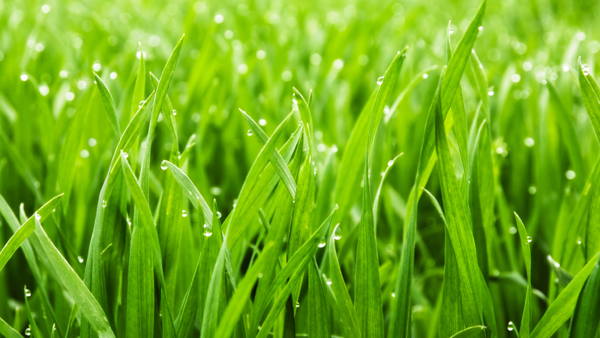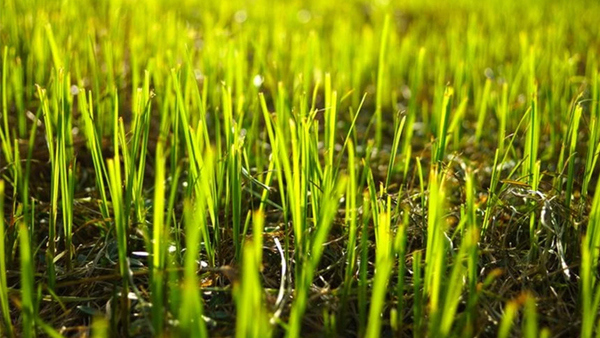Yates Account
Join now
Create a Yates account today!
Sign up to join the Yates Garden Club for monthly e-mails packed with seasonal inspiration, tips for success & exclusive promotions.
Plus if you’re a Garden Club member you can take part in the Yates Growing Community - a blog to share successes, get advice & win prizes in fun challenges along the way!

Forgot password
Enter the email address associated with your account, and we'll email you a new password.
How to repair bare patches
Bare patches in the lawn are a magnet for weeds to establish and spoil the look of the lawn. Also, it's common for established lawns to become thin and worn over time and they can benefit from over-sowing with new lawn seed to help thicken up and revive them.
For bare patches, first remove any weeds or dead grass from the patch. Gently cultivate the soil in the bare patch with a rake or garden fork to create a soft, loose surface. You can also spread some handfuls of lawn mix over the patch. For thin lawns, applying some lawn mix over the entire area can help improve new lawn seed establishment by providing a softer and loose surface. Yates Seed'n'Feed is ideal for oversowing bare patches.
Alternatively, mix the required amount of lawn seed with a turf starter fertiliser (like Yates Lawn Fertiliser for New Lawns). This makes it much easier to spread out the lawn seed over the bare patch or existing lawn, adds valuable organic matter to the soil and provides the new grass seedlings with gentle slow release nutrients as they establish.
Scatter the lawn seed, either by hand or with a spreader, then gently rake the seed into the soil surface. Keep the patch or area moist for several weeks while the new grass establishes.
Minimise foot and pet traffic on the newly sowed area until it is well established.
Uneven Surface?
Is your lawn a little bumpy and uneven? Maybe the kids bowled too many overs on the backyard pitch, or your dog has created a track? Don’t worry, you can mow the grass down low, then top dress the area with 80/20 (80% sand, 20% loam) to bring the low spots up to the level you want. It's best to spread only 1-2cm in depth at a time to level out the area, and then water well.


How to aerate your lawn
It's difficult for air, water and nutrients to penetrate into hard compacted soil. This makes it difficult for grass to grow and flourish, so it’s a good idea to amend and improve areas of compacted soil., by aerating it. Aeration is one of the keys to having a beautiful lawn. Aerating removes small plugs of soil, helping to open up the soil and improve water, air and nutrient penetration down into the root zone.
There are 3 options:
• Buy an inexpensive manual corer, with a foot bar so you can use your weight to push it down with a boot (ideal for small lawns)
• Hire a machine corer (mechanical corers save a lot of hard work) from a hire merchant
• Organise a contractor to do the job
Mow the area down low and water the day before to soften the soil. Aim to create 5cm-7.5cm deep cores in the compacted soil, approximately 2.5cm apart, then spread 80/20 topdressing (80% sand, 20% loam) at 1m3 per 10m2 over the area. Rake it in when it's dry. Your lawn will thank you for it.
Tips on de-thatching your lawn
Lawn thatch is the layer of organic material that forms under your grass, on top of the soil. Thatch formation can be accelerated if the soil is low in microbial life, which means soil microbes can't break down dead thatch material fast enough to keep up. A small amount of thatch is beneficial as it helps prevent evaporation, aids water retention and can increase tolerance to wear and tear. However, too much thatch can affect water, fertiliser and air getting down to the soil and grass roots. Thatch needs to be removed by a process called ‘de-thatching’ or scarifying. This can be done by mowing the lawn at a low level (this can be completed over several mows, lowering the mower at each cut) or very vigorously raking the lawn with a strong rake (sometimes called a thatching rake). Lawn scarifier machines are also available from hire merchants.
De-thatching established lawns is best carried out from mid spring to early summer, so that the weather is warm enough to promote fresh new grass growth. Apply a soil wetting agent, a lawn fertiliser and water well after de-thatching. This helps promote better water penetration into the root zone and encourages healthy grass growth.
A pick-me-up for your lawn
It's great idea to feed your lawn with a fertiliser that includes stress-relieving ingredients. Yates Lawn Fertiliser Quarterly Hose-on is an excellent option, as it feeds for 3 months, but also contains seaweed and humates that help your lawn and its microbial community bounce back after a tough season.













Share
Share this article on social media